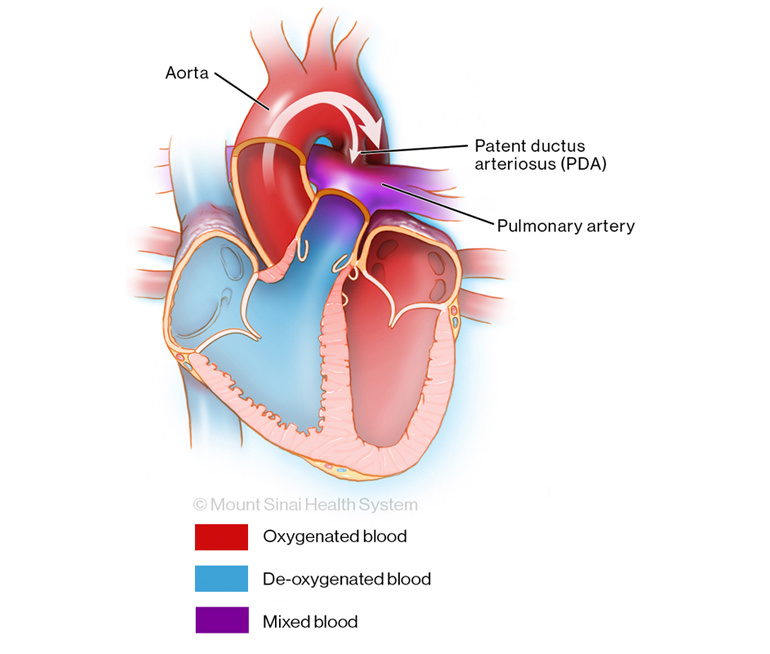
Patent Ductus Arteriosus
If your child has a patent ductus arteriosus (PDA), you can find comfort in knowing that our pediatric cardiologists have success in treating this condition—from the tiny hearts of premature babies to full grown adults.
About Patent Ductus Arteriosus
The ductus arteriosus is a blood vessel present in your baby as a fetus. While in your womb, your baby doesn’t use the lungs to breathe. The extra blood that doesn’t need to go to the lungs goes across the ductus arteriosus instead. The blood then moves down towards the placenta, where it gets more oxygen.
The ductus arteriosus is supposed to close soon after your baby is born. If that does not happen, that passageway remains open, and a PDA occurs. If the PDA is large enough, extra blood can flow through it and cause lung and heart issues.

Symptoms
A very small PDA may have not symptoms. However, a large PDA may cause some or all of the following symptoms:
- Difficult or fast breathing
- Heart murmur
- Difficulty feeding and poor growth
- Lung or heart infections
Diagnosis
If your child’s pediatrician hears a heart murmur, you may be referred to a pediatric cardiologist for a complete diagnosis. At Children’s Heart Center, we will discover if your child has a PDA.
Diagnosis may include:
- Echocardiogram—a safe, noninvasive procedure that uses high frequency ultrasound to show the structure of your child’s heart, how blood flows through the heart, and overall how your child’s heart and circulatory system are working
- Electrocardiogram (ECG)—measures electrical activity which shows the heart’s chambers and how your child’s heart is beating
- Chest X-ray—an image that can show the position and size of your child’s heart
Treatments We Offer
If your child’s PDA does not close naturally, it may cause a problem for your child’s heart or lungs, if the PDA is large enough. We can close the PDA with either a cardiac catheterization or a surgical procedure.
- Cardiac catheterization—during this minimally invasive procedure, a thin tube is inserted through the blood vessels in the groin, and a coil or device is placed to block the PDA
- Surgery—our surgeon makes a small incision on the side of the chest under the armpit, and then closes the PDA
Most children can have their PDA closed during a minimally invasive cardiac catheterization. The smallest babies or premature infants usually will need surgery.
Why Choose Children’s Heart Center?
The doctors and staff of Children’s Heart Center specialize in providing the most personalized and expert care for your child with congenital heart disease, including patent ductus arteriosus. Your child will have a collaborative team of doctors dedicated to your child’s care. We have the expertise to diagnosis and treat your baby’s heart condition using the most effective techniques to heal the PDA.
We support you and your family throughout the diagnostic and treatment process with compassion and expertise. Our team of pediatric cardiologists and nurses are here to help your child and your family for life.